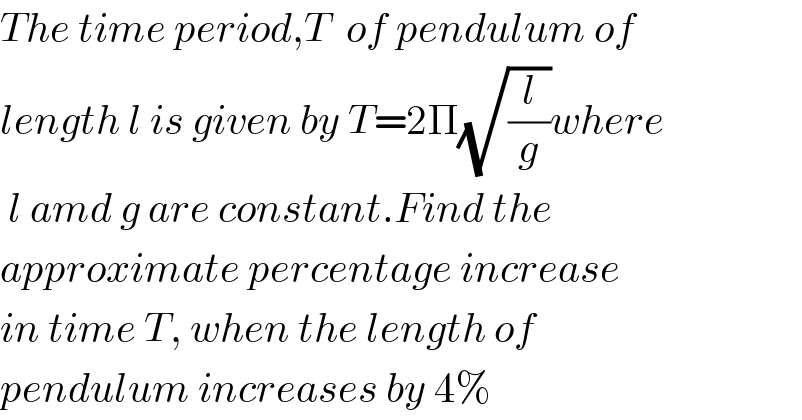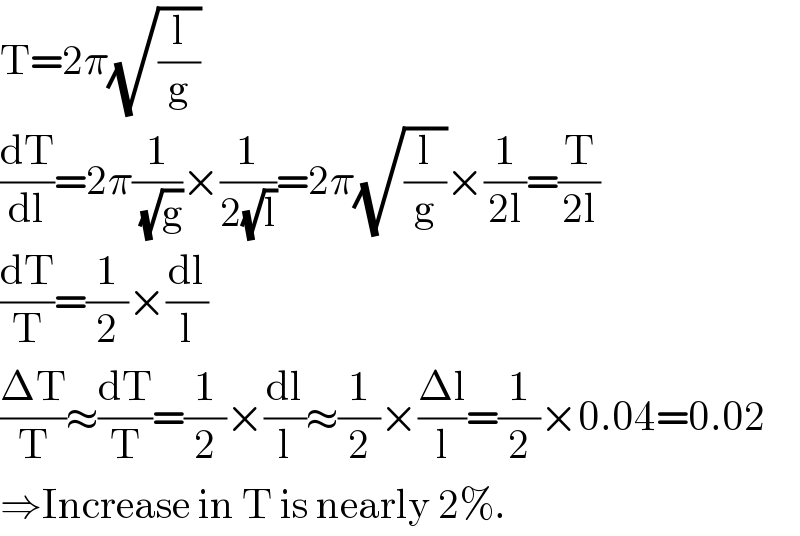
Question Number 20849 by j.masanja06@gmail.com last updated on 04/Sep/17

$${The}\:{time}\:{period},{T}\:\:{of}\:{pendulum}\:{of} \\ $$$${length}\:{l}\:{is}\:{given}\:{by}\:{T}=\mathrm{2}\Pi\sqrt{\frac{{l}}{{g}}}{where} \\ $$$$\:{l}\:{amd}\:{g}\:{are}\:{constant}.{Find}\:{the}\: \\ $$$${approximate}\:{percentage}\:{increase}\: \\ $$$${in}\:{time}\:{T},\:{when}\:{the}\:{length}\:{of}\: \\ $$$${pendulum}\:{increases}\:{by}\:\mathrm{4\%} \\ $$
Answered by mrW1 last updated on 04/Sep/17

$$\mathrm{T}=\mathrm{2}\pi\sqrt{\frac{\mathrm{l}}{\mathrm{g}}} \\ $$$$\frac{\mathrm{dT}}{\mathrm{dl}}=\mathrm{2}\pi\frac{\mathrm{1}}{\sqrt{\mathrm{g}}}×\frac{\mathrm{1}}{\mathrm{2}\sqrt{\mathrm{l}}}=\mathrm{2}\pi\sqrt{\frac{\mathrm{l}}{\mathrm{g}}}×\frac{\mathrm{1}}{\mathrm{2l}}=\frac{\mathrm{T}}{\mathrm{2l}} \\ $$$$\frac{\mathrm{dT}}{\mathrm{T}}=\frac{\mathrm{1}}{\mathrm{2}}×\frac{\mathrm{dl}}{\mathrm{l}} \\ $$$$\frac{\Delta\mathrm{T}}{\mathrm{T}}\approx\frac{\mathrm{dT}}{\mathrm{T}}=\frac{\mathrm{1}}{\mathrm{2}}×\frac{\mathrm{dl}}{\mathrm{l}}\approx\frac{\mathrm{1}}{\mathrm{2}}×\frac{\Delta\mathrm{l}}{\mathrm{l}}=\frac{\mathrm{1}}{\mathrm{2}}×\mathrm{0}.\mathrm{04}=\mathrm{0}.\mathrm{02} \\ $$$$\Rightarrow\mathrm{Increase}\:\mathrm{in}\:\mathrm{T}\:\mathrm{is}\:\mathrm{nearly}\:\mathrm{2\%}. \\ $$
